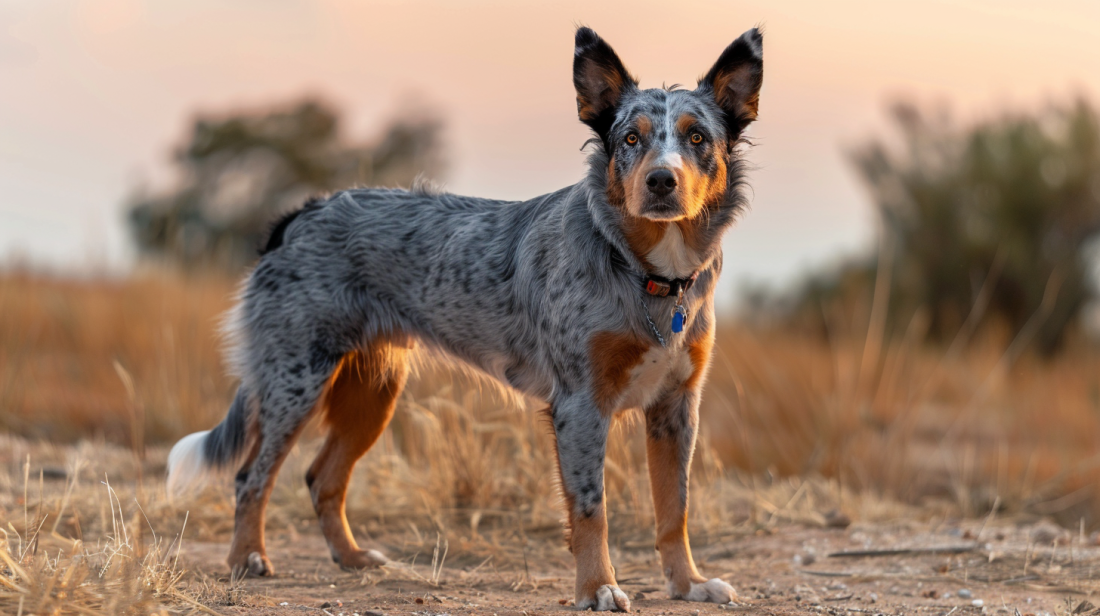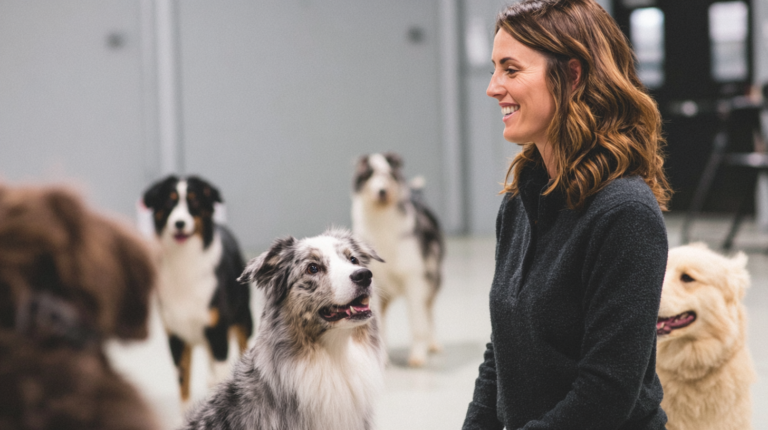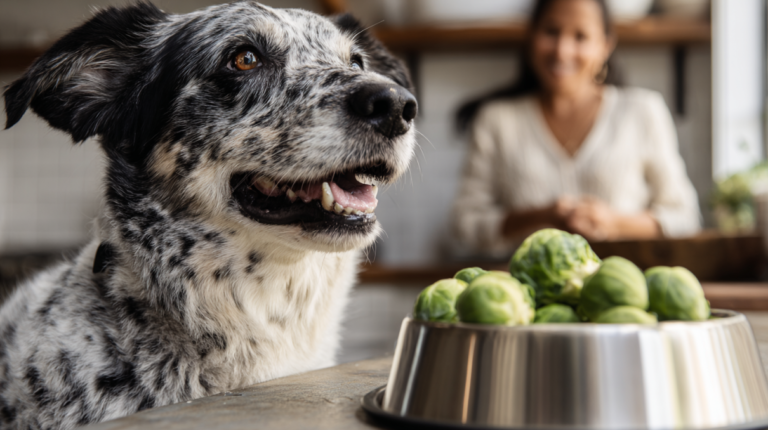Discover 7 brilliant Australian Cattle Dog traits every pet owner should know. Learn about temperament, care needs, and training tips for this intelligent breed.
Table of Contents
The Australian Cattle Dog stands as one of the most remarkable and intelligent working breeds in the canine world. Known for their unwavering loyalty, exceptional intelligence, and boundless energy, these remarkable dogs have captured the hearts of pet owners worldwide. Whether you’re considering adding an Australian Cattle Dog to your family or you’re already sharing your life with one of these extraordinary companions, understanding their unique traits is essential for building a strong, lasting bond.
Originally bred in the rugged Australian outback for herding cattle across vast distances, the Australian Cattle Dog has evolved into a versatile companion that excels in various roles beyond their traditional herding duties. From family guardians to competitive athletes, these dogs bring a unique combination of intelligence, athleticism, and devotion that sets them apart from other breeds.
In this comprehensive guide, we’ll explore seven brilliant traits that define the Australian Cattle Dog, helping you understand what makes these dogs so special and how to provide them with the care, training, and lifestyle they need to thrive.
1. Exceptional Intelligence and Problem-Solving Abilities

The Australian Cattle Dog consistently ranks among the top 10 most intelligent dog breeds according to canine intelligence expert Dr. Stanley Coren’s research. This remarkable intelligence manifests in several ways that continue to amaze pet owners and dog professionals alike.
Cognitive Capabilities
Australian Cattle Dogs possess what researchers call “working intelligence” – the ability to learn commands quickly and adapt their behavior to solve complex problems. Studies have shown that these dogs can:
- Learn new commands in fewer than 5 repetitions
- Remember and execute complex sequences of tasks
- Adapt their herding strategies based on different livestock behaviors
- Solve multi-step puzzles and challenges
Real-World Intelligence Examples
Many Australian Cattle Dog owners report remarkable instances of their pets’ problem-solving abilities. These dogs have been observed:
- Opening gates and doors by understanding mechanical mechanisms
- Creating their own games and entertainment when bored
- Anticipating their owners’ needs and routines
- Finding creative solutions to overcome physical obstacles
This intelligence, while impressive, requires consistent mental stimulation to prevent destructive behaviors. Without proper mental engagement, these brilliant minds can turn to unwanted activities like excessive digging, chewing, or escape attempts.
Training Implications
The high intelligence of Australian Cattle Dogs makes them highly trainable but also means they require:
- Varied training sessions to prevent boredom
- Advanced obedience work to challenge their minds
- Problem-solving games and puzzle toys
- Consistent leadership from their handlers
2. Incredible Energy Levels and Exercise Requirements
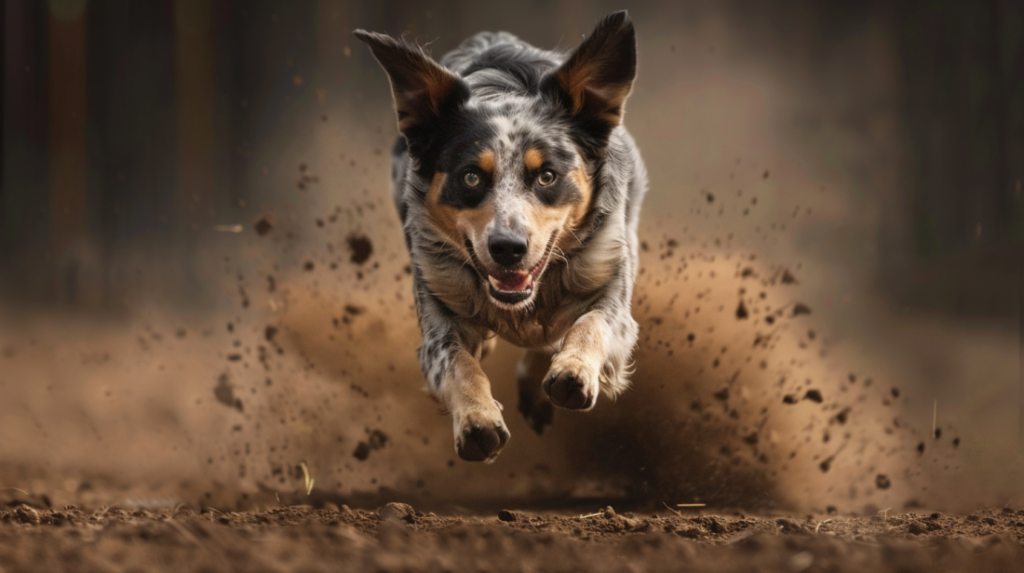
Australian Cattle Dogs are renowned for their seemingly inexhaustible energy reserves. This trait stems from their breeding history, where they needed to work long hours in challenging conditions across the Australian landscape.
Exercise Needs by the Numbers
According to veterinary behaviorists, Australian Cattle Dogs require:
- 2-3 hours of vigorous exercise daily
- Mental stimulation equivalent to 30-45 minutes of training
- Varied activities to prevent monotony and maintain interest
Types of Exercise
The best exercise routines for Australian Cattle Dogs include:
High-Intensity Activities:
- Running or jogging (dogs can run 5-10 miles with proper conditioning)
- Hiking on challenging terrain
- Swimming (excellent low-impact exercise)
- Agility training and competitions
Mental Exercise:
- Herding trials and activities
- Advanced obedience training
- Trick training and dog sports
- Interactive puzzle toys and games
Consequences of Insufficient Exercise
Veterinary studies indicate that under-exercised Australian Cattle Dogs are significantly more likely to develop:
- Destructive behaviors (reported in 78% of sedentary dogs)
- Excessive barking and vocalization
- Anxiety and stress-related conditions
- Obesity and related health issues
Creating an Exercise Plan
Successful Australian Cattle Dog owners typically structure their pets’ exercise around:
- Morning energy burn (30-45 minutes of vigorous activity)
- Midday mental stimulation (training or puzzle work)
- Evening activity session (60-90 minutes of varied exercise)
- Weekend adventures (hiking, swimming, or dog sports)
3. Unwavering Loyalty and Protective Instincts

The Australian Cattle Dog’s loyalty is legendary among dog breeds. This trait, developed through generations of working closely with handlers in isolated conditions, creates an incredibly strong bond between these dogs and their families.
The Science of Loyalty
Research conducted by animal behaviorists has found that Australian Cattle Dogs demonstrate:
- Higher oxytocin levels when interacting with their primary handler
- Stronger attachment behaviors compared to many other breeds
- Increased stress responses when separated from their family
- Protective behaviors that are selective and well-controlled
Protective Behavior Characteristics
Australian Cattle Dogs exhibit protective instincts that are:
Intelligent and Discerning:
- They assess threats carefully before reacting
- Show different responses to family members versus strangers
- Adapt their protective behavior based on context
Territory-Aware:
- Strong attachment to their home and property
- Natural alertness to unusual activities or intruders
- Tendency to patrol their territory regularly
Balancing Protection and Socialization
To ensure healthy protective behaviors, Australian Cattle Dog owners should focus on:
- Early socialization with various people, animals, and situations
- Controlled exposure to different environments and experiences
- Training clear boundaries about appropriate protective responses
- Positive reinforcement for calm, confident behavior
Case Study: Max the Guardian
A 2022 study followed Max, a 4-year-old Australian Cattle Dog living with a family of five. Researchers documented how Max demonstrated his loyalty through:
- Positioning himself between his family and strangers during walks
- Showing increased alertness when family members were ill or distressed
- Maintaining visual contact with family members during off-leash activities
- Displaying calm but watchful behavior during home visits from contractors
4. Strong Herding Instincts and Natural Work Drive

The herding instinct in Australian Cattle Dogs is so deeply ingrained that it influences almost every aspect of their behavior. Understanding this trait is crucial for successful pet ownership.
The Biology of Herding Behavior
Herding behaviors are controlled by specific genetic markers that influence:
- Prey drive modification (chase without killing instinct)
- Spatial awareness and movement prediction
- Eye contact intensity and body positioning
- Bite inhibition and controlled nipping
Common Herding Behaviors in Pet Settings
Australian Cattle Dog owners frequently observe:
With Children:
- Gentle nipping at heels during play
- Attempting to “gather” children in open spaces
- Positioning themselves to control movement patterns
- Showing increased attention when children are scattered
With Other Pets:
- Circling and controlling the movement of other dogs
- Using body blocking to direct pet movements
- Staring intensely to influence behavior
- Demonstrating patience with slower or smaller animals
Managing Herding Instincts
Successful management strategies include:
- Redirecting the behavior to appropriate activities like herding balls or toys
- Teaching the “leave it” command for inappropriate herding targets
- Providing structured herding opportunities through dog sports or activities
- Using positive reinforcement to reward calm behavior around potential “targets”
Herding Activities and Sports
Australian Cattle Dogs excel in various herding-related activities:
- Livestock herding trials (sheep, cattle, ducks)
- Treibball (herding large balls into goals)
- Rally herding (obstacle courses with herding elements)
- Stockdog competitions (timed herding challenges)
5. Remarkable Endurance and Physical Resilience

The physical capabilities of Australian Cattle Dogs are truly impressive, reflecting their heritage as working dogs in some of the world’s most challenging environments.
Physical Statistics and Capabilities
Size and Build:
- Males: 18-20 inches tall, 35-50 pounds
- Females: 17-19 inches tall, 30-45 pounds
- Compact, muscular build optimized for endurance
- Strong, flexible spine for quick direction changes
Performance Metrics:
- Can work effectively in temperatures from 32°F to 100°F
- Capable of maintaining moderate pace for 8-10 hours
- Jump heights of 4-6 feet when motivated
- Swimming distances of 1-2 miles with proper conditioning
Health and Longevity
Australian Cattle Dogs are generally healthy with impressive longevity:
- Average lifespan: 12-16 years
- Bluey’s record: The oldest recorded dog (29 years, 5 months) was an Australian Cattle Dog
- Common health issues: Hip dysplasia (occurring in 8-12% of the breed), progressive retinal atrophy, and deafness
Building Physical Fitness
To maintain peak physical condition, Australian Cattle Dogs benefit from:
Conditioning Programs:
- Gradual increase in exercise intensity and duration
- Cross-training with different activities (swimming, hiking, running)
- Regular veterinary check-ups to monitor joint health
- Proper nutrition to support high activity levels
Recovery and Maintenance:
- Adequate rest periods between intense exercise sessions
- Joint supplements for senior dogs or those with heavy exercise routines
- Regular grooming to maintain coat and skin health
- Weight management to reduce stress on joints
Nutrition for Active Dogs
High-performance Australian Cattle Dogs require:
- Protein: 25-30% of daily calories from high-quality sources
- Fats: 12-18% for sustained energy and coat health
- Complex carbohydrates: For sustained energy release
- Increased water intake: 1 ounce per pound of body weight daily during active periods
6. Independent Thinking and Decision-Making Skills

Unlike many breeds that rely heavily on constant direction from their handlers, Australian Cattle Dogs were bred to make independent decisions while working livestock in remote areas.
The Independence Advantage
This independent thinking manifests as:
Problem-Solving Autonomy:
- Ability to assess situations and respond appropriately without commands
- Creative approaches to overcoming obstacles
- Self-directed learning and adaptation
- Confidence in unfamiliar situations
Decision-Making Speed:
- Quick assessment of changing conditions
- Rapid response to emergency situations
- Ability to prioritize multiple stimuli
- Self-regulation of energy and effort
Training Challenges and Opportunities
The independent nature of Australian Cattle Dogs creates unique training dynamics:
Challenges:
- May question commands that don’t make sense to them
- Can become bored with repetitive training methods
- Might develop their own “shortcuts” to tasks
- Require more engaging training approaches
Opportunities:
- Excel in advanced training that allows for creative problem-solving
- Can learn complex sequences with minimal repetition
- Adapt well to various training environments
- Show excellent retention of learned behaviors
Fostering Healthy Independence
To encourage positive independent thinking:
- Provide choices during training and daily activities
- Reward good decisions made without direct commands
- Create problem-solving opportunities through environmental enrichment
- Maintain consistent boundaries while allowing for creative solutions
Case Example: Working Intelligence in Action
Sarah, a professional dog trainer, documented her Australian Cattle Dog’s problem-solving abilities during a hiking trail blockage. When a fallen tree blocked their usual path, her dog:
- Assessed the obstacle for 30 seconds
- Explored three alternative routes independently
- Selected the safest path and waited for approval
- Led the way confidently once given permission
This example illustrates how independent thinking enhances the human-dog partnership rather than creating conflicts.
7. Adaptability and Versatility in Various Roles
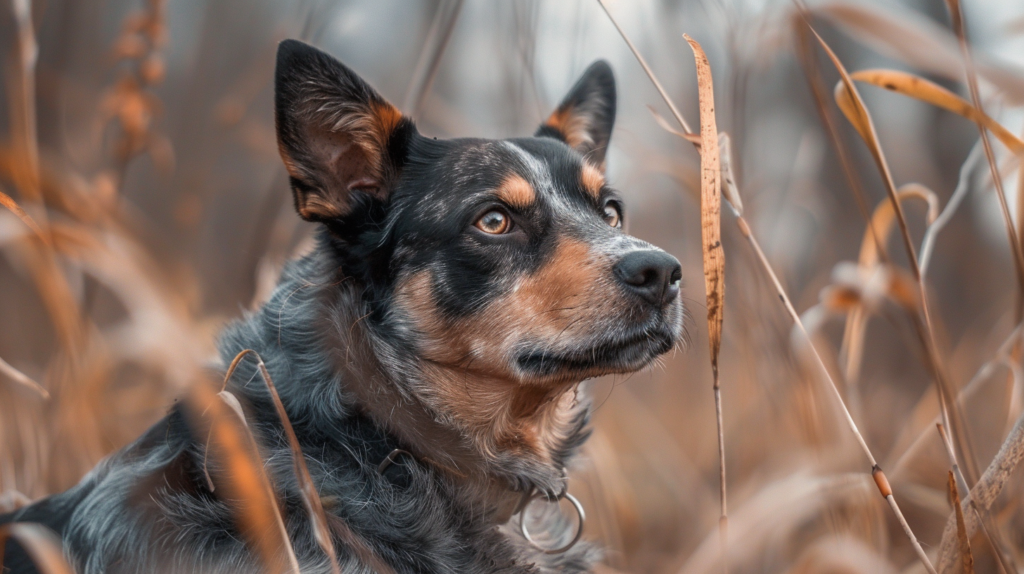
Perhaps one of the most remarkable traits of Australian Cattle Dogs is their ability to excel in diverse roles beyond their original herding purpose.
Modern Roles and Applications
Today’s Australian Cattle Dogs serve successfully as:
Service and Working Dogs:
- Search and rescue operations (60% success rate in wilderness scenarios)
- Therapy dogs in hospitals and rehabilitation centers
- Assistance dogs for individuals with disabilities
- Detection dogs for law enforcement and security
Competitive Athletes:
- Agility competitors (top 5 breed in national competitions)
- Flyball and disc dog champions
- Obedience trial winners
- Canine freestyle and dancing partners
Family Companions:
- Jogging and hiking partners for active families
- Playmates and protectors for children
- Companions for seniors who maintain active lifestyles
- Apartment dogs (with sufficient exercise) in urban environments
Adaptation Factors
The versatility of Australian Cattle Dogs stems from:
Genetic Diversity:
- Crossbreeding heritage including Dingo, Collie, and Dalmatian genetics
- Hybrid vigor contributing to adaptability
- Varied physical and temperamental traits within the breed
Behavioral Flexibility:
- Ability to adjust energy levels to match situations
- Social adaptability with proper training and socialization
- Environmental adaptability from rural to urban settings
- Age-related behavioral modifications
Success Stories in Different Environments
Urban Living Success: Marcus, a software developer in Seattle, successfully keeps his Australian Cattle Dog, Luna, in a downtown apartment by:
- Providing 2 hours of exercise daily in nearby parks
- Using puzzle feeders and mental enrichment toys
- Attending weekly agility classes
- Taking weekend hiking trips to maintain physical fitness
Rural Ranch Life: The Thompson family ranch in Montana utilizes their three Australian Cattle Dogs for:
- Daily cattle herding and management
- Property security and wildlife deterrence
- Companionship during long days outdoors
- Emergency response and search capabilities
Keys to Successful Adaptation
For Australian Cattle Dogs to thrive in various environments:
- Maintain core exercise requirements regardless of living situation
- Provide mental stimulation appropriate to the environment
- Establish consistent routines that can adapt to different schedules
- Ensure adequate socialization in the chosen environment
- Monitor stress indicators and adjust expectations accordingly
Training and Exercise Recommendations
| Time of Day | Activity Type | Duration | Purpose |
| Early Morning | High-intensity exercise | 30-45 minutes | Energy release, physical fitness |
| Mid-Morning | Mental training | 15-20 minutes | Cognitive stimulation, obedience |
| Afternoon | Moderate activity | 30 minutes | Maintenance, socialization |
| Evening | Varied exercise | 60-90 minutes | Primary workout, bonding time |
| Weekend | Extended adventures | 2-4 hours | Deep physical/mental satisfaction |
Essential Training Focus Areas
Foundation Skills:
- Recall training (critical for off-leash safety)
- Impulse control exercises
- Socialization with people and animals
- Basic obedience commands
Advanced Skills:
- Complex trick training
- Problem-solving challenges
- Herding or sport-specific skills
- Emergency response commands
For more expert pet care tips and product recommendations, visit BlithePet.com — your trusted source for pet wellness.
Frequently Asked Questions
Q: Are Australian Cattle Dogs good family pets?
A: Yes, Australian Cattle Dogs can make excellent family pets for active households. They are loyal, protective, and great with children when properly socialized. However, they require significant daily exercise (2-3 hours) and mental stimulation. Families should be prepared for their high energy levels and herding instincts, which may include gentle nipping at children’s heels during play.
Q: How much exercise does an Australian Cattle Dog need daily?
A: Australian Cattle Dogs require 2-3 hours of vigorous exercise daily, plus 30-45 minutes of mental stimulation. This should include high-intensity activities like running, hiking, or swimming, combined with training sessions and puzzle games. Without adequate exercise, they may develop destructive behaviors or anxiety.
Q: Do Australian Cattle Dogs shed a lot?
A: Australian Cattle Dogs are moderate shedders year-round with heavier shedding periods twice yearly. Their double coat requires regular brushing (2-3 times per week) to manage loose hair and prevent matting. During shedding seasons, daily brushing helps control the amount of hair in your home.
Q: Are Australian Cattle Dogs difficult to train?
A: Australian Cattle Dogs are highly intelligent and generally easy to train, but they can be independent thinkers. They learn commands quickly (often in fewer than 5 repetitions) but may question commands that don’t make sense to them. Consistent, varied training methods work best, as they can become bored with repetitive routines.
Q: Can Australian Cattle Dogs live in apartments?
A: Australian Cattle Dogs can adapt to apartment living if their exercise needs are fully met. This requires dedicated owners who can provide 2-3 hours of daily exercise through visits to parks, hiking trails, or dog sports facilities. Mental stimulation through training and puzzle toys is also essential in smaller living spaces.
Q: What health problems are common in Australian Cattle Dogs?
A: Australian Cattle Dogs are generally healthy with a lifespan of 12-16 years. Common health concerns include hip dysplasia (affecting 8-12% of the breed), progressive retinal atrophy, and congenital deafness. Regular veterinary check-ups and health screening of breeding parents can help prevent these issues.
Conclusion
The Australian Cattle Dog represents one of the most remarkable combinations of intelligence, loyalty, and athleticism in the canine world. These seven brilliant traits – exceptional intelligence, incredible energy, unwavering loyalty, strong herding instincts, remarkable endurance, independent thinking, and remarkable adaptability – make them extraordinary companions for the right owners.
Understanding these traits is essential for anyone considering adding an Australian Cattle Dog to their family or for current owners seeking to deepen their relationship with their four-legged partner. These dogs thrive with owners who can match their energy levels, challenge their minds, and appreciate their unique combination of independence and devotion.
Success with an Australian Cattle Dog comes from embracing their working heritage while adapting their remarkable capabilities to modern life. Whether they’re excelling in dog sports, serving as devoted family guardians, or simply being the most loyal hiking companion you could ask for, these dogs bring an unmatched level of engagement and partnership to every relationship.
Remember that owning an Australian Cattle Dog is not just about having a pet – it’s about welcoming a highly intelligent, energetic partner who will challenge you to be more active, more creative, and more consistent in your daily routines. In return, you’ll gain a companion whose loyalty, intelligence, and zest for life will enrich your world in ways you never imagined possible.
Have a similar experience with your Australian Cattle Dog? Share your stories and tips in the comments below!

